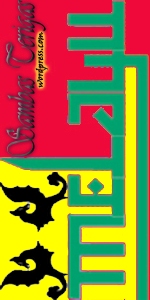Sunday, December 28, 2008
ABOUT 200 years before the Brookes became the White Rajah of Sarawak, Sarawak was under the control of the Brunei Sultanate. Not much has been known how Sarawak was governed by the Brunei Sultanate but presumably there was an equivalent of a governor then.
Not many know that around 1598, Sarawak had its first and only Sultan. How did this come about?
When Sultan Muhammad Hassan, Brunei’s ninth Sultan who reigned from 1582 to 1598 died, the throne was ascended by his eldest son, Sultan Abdul Jalilul Akbar.
Sultan Abdul Jalilul Akbar had a younger sibling named Pengiran Muda Tengah Ibrahim Ali Omar Shah or was better known as Raja Tengah.
According to oral tradition, Pengiran Muda Tengah wanted to become the Sultan of Brunei as well. He argued that his elder brother was born when his father was not yet the Crown Prince whereas he was born when Sultan Muhammad Hassan was anointed as the Crown Prince. This, argued Pengiran Muda Tengah, made him more suited to be the Sultan than his elder brother.
Sultan Abdul Jalilul Akbar was a wise man. He understood his younger sibling’s intention and he tried to accommodate his brother’s wishes. One way out for Sultan Abdul Jalilul Akbar was to appoint Pengiran Muda Tengah as a Sultan somewhere else. And so Pengiran Muda Tengah was appointed as the Sultan of Sarawak, since Sarawak was then owned and governed by Brunei.
According to the Salsilah Raja-Raja Brunei, Pengiran Muda Tengah accepted the appointment and he made preparation to go to Sarawak. When he went to Sarawak, more than 1,000 warriors of Sakai, Kedayan and Pulau Bunut origins accompanied him. A few nobilities went along with him to help him administer the new country. Many of these are the forefathers of some of today’s Malay community in Sarawak.
 This blog is for my own self-expression for my homesickness.
It's been long time I left my hometown, my culture, and my big family there.
This is my starting point to know and to learn again our culture, our language and our history.
I am trying to be aware again of our great civilization for the sake of the glory of Sambas.
This blog is for my own self-expression for my homesickness.
It's been long time I left my hometown, my culture, and my big family there.
This is my starting point to know and to learn again our culture, our language and our history.
I am trying to be aware again of our great civilization for the sake of the glory of Sambas.

